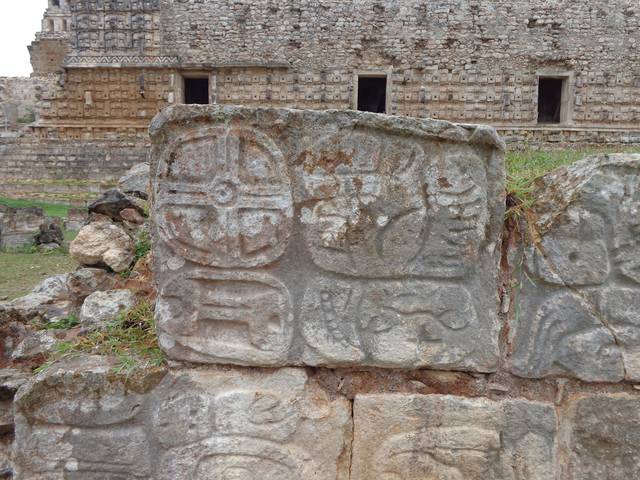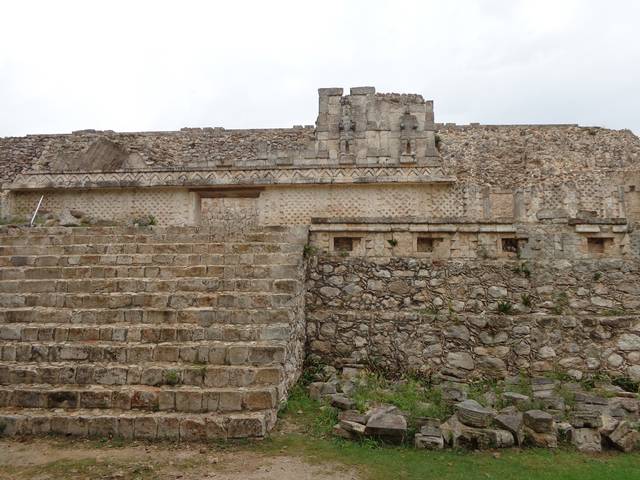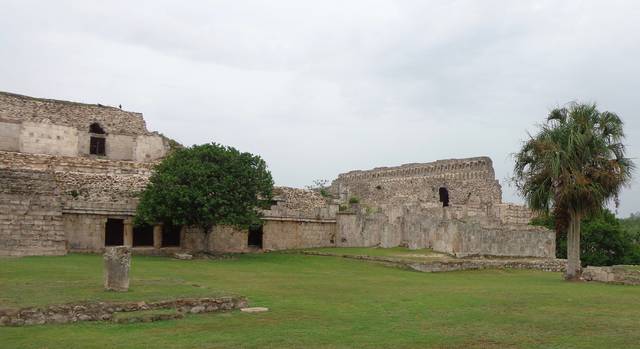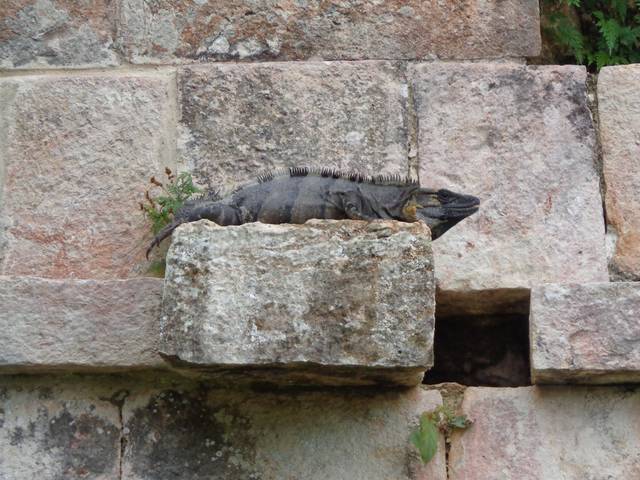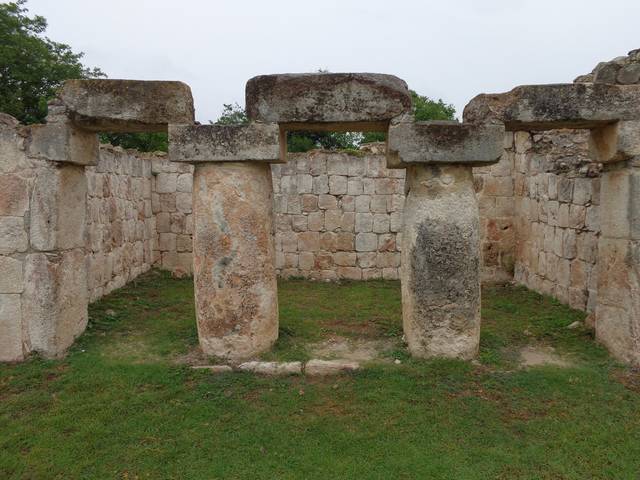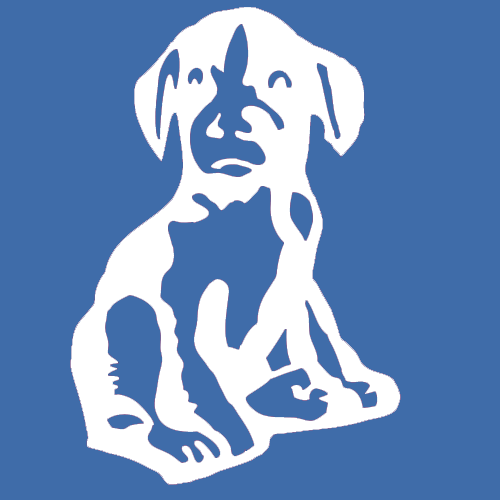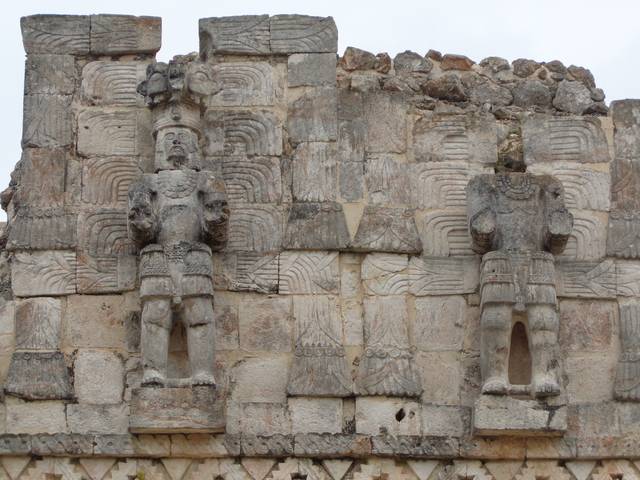
Elaborately-carved Mayan statues remain well-preserved at the Kabah ruins in Mexico’s Yucatan Peninsula.
Two rectangular concrete and stone columns straddle a narrow passageway that serves as an entrance. A worn, handcrafted wooden sign painted in red, now fading, is secured to the top of the column on the left. In all capital letters, the word Kabah is etched onto its surface.
On the ground, scarlet petals from a nearby tree blanket the fine gravel still damp from the morning rain. The air, heavy underneath the gray sky, hints that more showers are likely.
Our family enters the archeological site with reverence, because it’s not lost on us that this space was once home to a community of people. Individuals who rose in the mornings, worked, played and spent time with their families.
Mayan ruins throughout the Yucatan Peninsula are many. Home to the Mayan culture for centuries, Kabah is dotted with structures that likely date back to 300 B.C. and were in use through the 1500s and even later.
Most impressive of all the structures on the grounds is the Palace of the Masks, its facade covered in hundreds of carved-stone masks depicting the god of rain, Chaac. It reaches two stories high and includes multiple rooms.
The thought is, perhaps, that a dependency on precipitation inspired the excessive devotion to Chaac, as Kabah is considered to have a drier climate than other parts of the Yucatan.
Scattered throughout Kabah, meaning strong, mighty or powerful hand, are also a number of smaller step-pyramids and single-room buildings.
While the surrounding stretches of land are characteristically flat, nearby areas are marked with a few hills and mounds. These beg the question: what, if anything, is underneath?
Has time allowed for other significant buildings, temples, former homes to be concealed with layers of new earth? Just how much of Kabah remains to be revealed? Are we privy to only a glimpse?
Our family roams about every accessible section, accepting the invitation to climb at every available opportunity. And to explore.
Its past and its future may remain a mystery, but Kabah’s present does not.
(Note: Marjorie Appelman is an English, communications and journalism teacher at Mason County High School and co-founder of Tales from the Trip, which is on Twitter, Instagram and Facebook. She can be reached at [email protected].)

